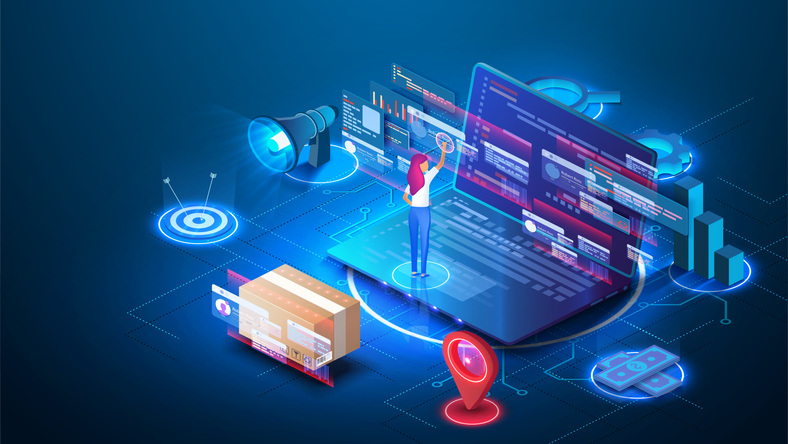
By Adam Mogelonsky, Larry Mogelonsky
Often the personal can speak to the universal, so let’s start with a personal story of a 120-room, independent hotel that we were recently helping to resolve some tech issues. The key goal put forth by the managing director was to merge all guest data into a unified guest experience management system so that the property could ramp up packaging and upselling (pre-arrival and onsite) in order to drive total revenue per guest (TRevPAR) for when the post-pandemic demand surge had normalized.
The problem was that the tech stack had become needlessly complex as single-use pieces were added iteratively over the years. This siloed approach not only led to increased total ongoing software fees, but the IT team had to spend more time maintaining integrations while the options for new pieces were constrained by the established interfaces of the current systems. Moreover, too many different systems had created data bottlenecks and the end users — onsite teams mostly comprising twenty-something guest service agents and managers — were stressed out by having to cross-reference so many databases.
Sound familiar? It’s a situation all of us are confronting in some way as the industry’s need for automation has bloomed over the past few years. In this case, the managing director was looking for us to evaluate then help implement yet one more platform to act as this single source of truth for guest profile data, but our solution was to first take a step back and look for a vendor that could solve the present-day challenge then also offer room to grow as systems were consolidated quarter over quarter.
The hotel tech stack in 2023 is one seeking minimalism, not further expansion, especially given the risk of creating zombie platforms that your teams are too busy to learn or use on a regular basis. The year ahead is thus about finding a one-stop shop that offers a versatile range of tools to make things simple for both sales and marketing, as well as operations.
On this note, we were impressed by the latest platform offered by INTELITY because its GEMS (Guest Experience Management System), in addition to its core ticketing functions, had the ability to quickly take on this single-source-of-truth role, as well as help fill some gaps that would have otherwise required the extra cost of single-use system deployments.
For you as the reader, what’s critical to understand is some top-level criteria for evaluating tech going forward — specifically what to look for in a one-stop shop so that you can build a roadmap for consolidation around a handful of platforms to serve all your current needs and help you grow TRevPAR.
What Can You Do with a Single Source of Truth
What impressed us most about the platform — and what you should always evaluate any provider on — was the richness of GEMS in its ability to copy, clean and merge guest data from the PMS, POS, any other F&B systems, spa booking software, operations platform, and the hotel guest app. Once you have that, the possibilities are only as good as the ideas, questions, and inferences your managers have.
For this property case study, we were also working with the F&B director to cultivate an exquisite wine program. Oenophiles as the two of us are, we saw an opportunity to build TRevPAR by identifying then targeting past guests whose data revealed them as probably being fellow wine enthusiasts. This alone required some analytics around past package purchases, onsite restaurant purchases (total wine spend, specific bottles bought, and so on) and any wine-related arrival amenities that were successfully upsold.
The strategy from there was to refine a list of customers, then target them with an exclusive and high value-add, wine-focused package that brought together past F&B purchases, in-room services and a bespoke experience. Moreover, we also applied this data query to our automated upselling, knowing that sometimes guests simply weren’t ready to consider additional purchases at the time of reserving a room. It seems simple, but before this transition, the creation and targeting for something like this would all have to be done using offline exported sheets in Excel.
How Unified Platforms Help Save Labor
Thinking about how a one-stop shop can help build topline revenues is still less than half the battle in a labor-tight market, especially when you’re having problems fulfilling service orders. Here’s what we found in INTELITY — both from its back-of-house platform and from its guest-facing app — so that you can use this as a guide for your own endeavors:
1. The hotel app that teams like to use. From the point of view of the onsite content managers, it’s all about having the ability to automate service requests as well as execute no-code updates on the fly within the CMS. Further, having the app directly connected into the GEMS with data ported from the operations platform allowed both the front office manager and executive housekeeper to anticipate high-volume periods for less overtime and faster service overall.
2. The hotel app that guests prefer to use. By far the most popular use for the app was for F&B, and yet much of this was a straight displacement of orders previously put through the phone system. While on paper it could be seen as a net-zero, this passthrough nevertheless meant that the front desk team wasn’t constantly interrupted by all these in-house guest calls, whether it was for F&B or other complimentary services. Secondly, we found that cart size was larger for app orders than for phone orders, suggesting that guests will spend more with a hotel when they can browse online without feeling rushed by having a live person on the other end.
3. Reframing the mobile check-in experience. If you look at many of the current online registration and mobile check-in procedures, it can be quite a cumbersome flow from the guest’s perspective. Instead, identification verification can now be completed within the app well in advance of a guest’s stay, then geolocation proximity algorithms can detect on the day of arrival that the guest is now onsite (or is approaching the hotel) and automatically drop the mobile key into the hotel app, as well as ping the appropriate teams for any welcome amenity requirements. This requires a complex series of connections between the app, security platform, operations platform, door locks and the PMS, but it can now be done, all to improve the guest check-in experience and boost labor efficiencies.
4. Pitching in for tech stack gaps. Opting for a handful of robust platforms oftentimes means that certain departments doggedly request standalone solutions to meet all of their specific needs. Part of our job was thus to deftly handle the change management insofar as convincing siloed teams of the merits of system consolidation with all the productivity gains that would be achieved — for instance, by temporarily filling the role of a service and work order system. What we’ve often found on tech consultations is that the search for a single-use system that can meet the department’s every single requirement can take upwards of a full year, all the while the team suffers in lost productivity. The cost of capital is now too great for this type of waiting game, and it’s better to have a versatile, centralized platform that pitches in wherever needed.
To close, and add to that fourth point, these one-stop shop platforms give hotels the ability to reduce subscription fees by not needing a bunch of standalone solutions, but, perhaps more significantly, they allow for utility players where labor and managers can be flexibly distributed across multiple operations at any given time, both to meet the needs of any given day in a labor-tight world and also as motivation to deter employee turnover.
That’s where the future of hotel labor is headed and that’s what’s most important heading into 2023. Wages are only going to keep rising and the need to intelligently drive revenue per guest is also becoming all the more crucial, so you need to start thinking holistically about how your entire tech stack can grow in this direction.


